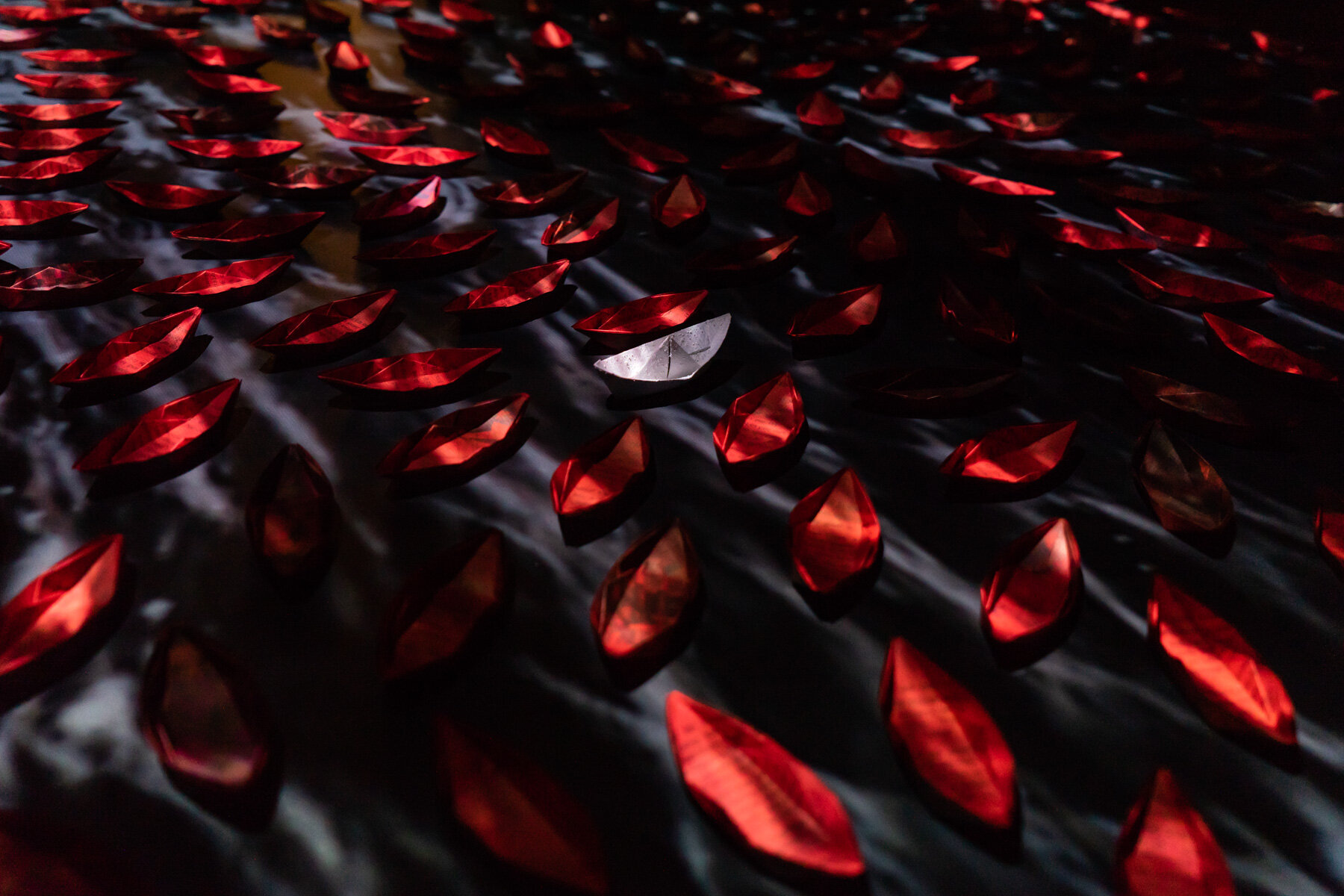Voices of survival: ‘Rite of Passage’ at QUT
/Jenna Lee,un/bound passage, 2019, installation detail, ‘Rite of Passage’, QUT Art Museum, Brisbane, 2020; hand-dyed and folded paper installation from pages of The Voyages of Captain Cook (Ladybird Books), with video projection; courtesy the artist; photo: Louis Lim
With its many anxieties and tragedies, it is possible to forget that the year 2020 also marks the 250-year anniversary of this land’s biggest disruptor of all – that of colonisation. It is from this legacy of environmental and cultural destruction that there emerges the contemporary autobiographical survival stories of the 11 strong Aboriginal women who are showcased in ‘Rite of Passage’ at Brisbane’s QUT Art Museum (until 10 May). Here their art defines them as powerful voices of their families and ancestors.
Jenna Lee looked to her vintage copy of The Voyages of Captain Cook by English children’s publisher Ladybird Books to respond to the whitewashed mainstream narrative of first contact. un/bound passage (2019), a paper and projection installation by Lee, creates an ocean of small boats folded from the pages of the book as an exercise in deconstruction and translation of the past.
For Nici Cumpston, landscapes are a defining relationship. Her large-scale photographic images of bleached bare tree trunks standing amid dry riverbeds in the Murray-Darling basin are tragic reminders of a massive ongoing environmental failure. As a descendant of the Barkandji people of these waterways, Cumpston describes in the exhibition catalogue that ‘we rely on them to sustain us physically, emotionally and spiritually’. Inseparable from her country, the artist captures and beautifully renders Ringbarked II, Nookamka Lake (2011–14) in subtle greens, blues and browns.
Karla Dickens’s mixed-media sculptures of vulva-shaped leather saddles express the physical and sexual subjugation of Aboriginal women. Featuring rusted chains and a dinner bell wrapped around a gaping orifice stuffed with empty tin cans, Dickens’s Workhorse III (2015) speaks of the women and girls in her family who had duties to be ‘useful ... on farms and homes by both day and night’ to quote the artist’s description.
Together, these artists observe the painful transition of a thriving pre-colonial civilisation into being forced subjects of the Commonwealth, in an exhibition provocatively titled by curator Shannon Brett as a ‘rite of passage’. This term is elaborated on in Brett’s curatorial essay as the artists’ Aboriginal rites as carriers of their families’ stories, but the proposition also equates the rite of passage with a ‘change for this nation’. If white Australia can truly reconcile and amend for deeply entrenched systems of rape, slaughter and dispossession – the three listed in order on Judy Watson’s butcher’s apron series flag 1 (1994) – perhaps the nation can undergo a difficult process to reach a new stage of maturity.
Emily Wakeling, Brisbane



















